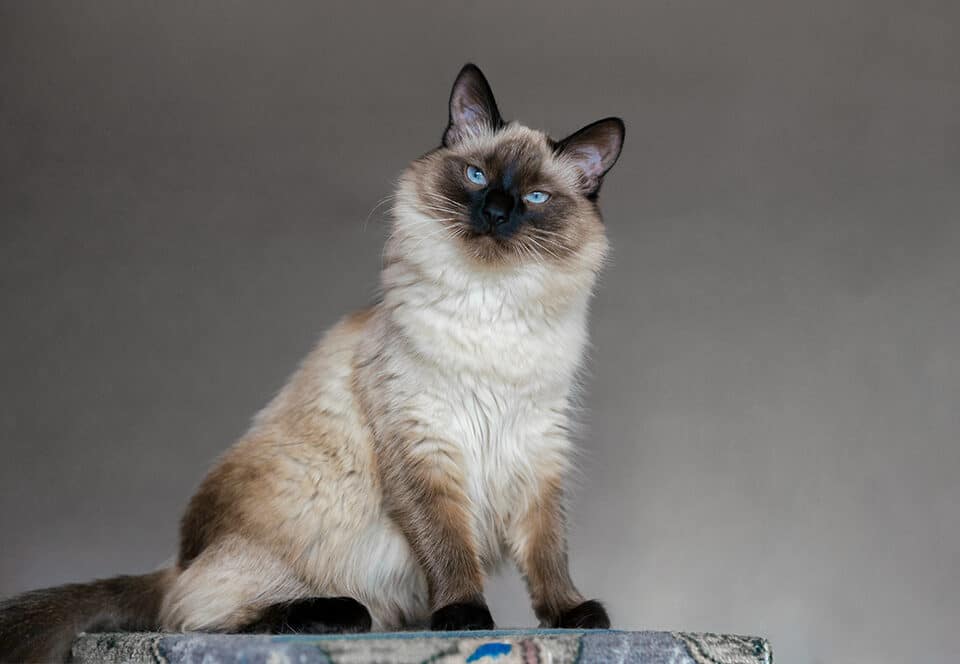Cats captivate us with their elegant looks and unpredictable personalities. Interestingly, some cat breeds can surprise their owners by living into their 20s. Genetics, lifestyle, and diet all play a role in this longevity. As we dive into the world of long-living cats, you’ll discover what makes these breeds special and the secrets to their extended lifespans. Get ready to meet these extraordinary felines!
Many cat lovers find themselves wondering how long their furry companions might stick around. While the average cat age is around 13 to 18 years, some breeds exceed this, providing companionship for two decades or more. Knowing about the longest-lived cat breeds can help you make informed choices if you’re considering adopting a new feline friend. Let’s take a closer look at twelve truly remarkable cats and their impressive lifespans.
Burmese cats are renowned for their social nature and intelligence. Their playful demeanor makes them delightful companions. The oldest known cat was a Burmese who lived to an astonishing 35 years. Their longevity is partly due to their strong Siamese bloodlines. However, owners should be aware of their susceptibility to diabetes, glaucoma, and other health issues to ensure they thrive.
Distinctive and beautiful, Siamese cats are known for their vocal nature, using a range of meows to express themselves. Amazingly, some live beyond 20 years, a testament to their robust health. Keep an eye on their teeth and eyes as they are prone to issues like glaucoma and retinal atrophy. Also, respiratory problems can occasionally surface, needing attention.
The Balinese, a close cousin to the Siamese, sports a luxurious coat due to a genetic quirk. They’re affectionate yet mischievous, always ready for a chat or a play session. Be aware of potential health setbacks, including lysosomal storage disease and strabismus, which is surprisingly common. Keeping these charming cats entertained and healthy is key.
Quiet and laid-back, Russian Blues are a sight to behold. Beneath their stunning fur lies a cat prone to obesity if not kept active. They may face PRA and bladder stones, but these are typically less troubling than potential heart issues from weight gain. Regular playtime and a balanced diet can keep them happy and healthy for many years.
Ragdolls are famous for their affectionate, plush personalities and their tendency to ‘flop’ in your arms. These gentle giants can learn tricks and love human interaction. However, their sweet nature comes with health considerations, including heart and bladder issues. For a long, loving life, managing these conditions early is crucial for their well-being.
Persians epitomize elegance and relaxation, with a lineage dating back centuries. These lap cats are laid-back and loving, perfect for calm households. Yet, their distinct facial structure can lead to respiratory issues and eye problems. Regular grooming and vet visits can help manage potential conditions, preserving their majestic presence for years to come.
The adventurous Savannah loves water and can even walk on a leash. These active felines bring the wild into the home with their playful antics. Though generally healthy, they may experience heart or respiratory issues. Understanding their prey instincts is important if other small pets are present. Active play and regular check-ups ensure they’re pouncing around for years.
Famed for their short tail, Manx cats are loveable hunters, known for their affectionate nature. Yet, they often face arthritis and other ailments linked to their tails. Some may develop Manx Syndrome, a series of health challenges needing careful attention. Regular check-ups and a nurturing home are vital to extending their charming companionship.
An Oriental Shorthair is a bundle of energy and communication. With Siamese roots, they’re social butterflies who thrive in company. However, their genetic lineage exposes them to liver and heart issues. A stimulating environment and awareness of health needs will support their lively nature and keep them healthy and joyful.
Known for their hunting skills, American Shorthairs are intelligent and independent. While they’re generally healthy felines, some may develop heart disease or obesity, especially with a sedentary lifestyle. Proper diet and exercise are essential to keep them spry and curious, tapping into their natural instinct to chase and explore.
Bombays love the spotlight, often basking in the sun or enjoying lively play. They need lots of interaction to prevent boredom. One serious concern is a craniofacial defect seen in some Bombays, stressing the importance of responsible breeding practices. With mindful care, they can enjoy many sunlit naps and playful days.
Small in size but big in heart, the Singapura blends playfulness and intelligence. Often dubbed the ‘pesky people cat,’ they enjoy interacting with humans. Despite their robust nature, they can face thyroid and renal issues. It’s best to keep them stress-free and in a stable environment to enjoy their spirited antics for years.
Choosing a cat with longevity in mind means you’ll enjoy years of clever antics and cuddles. While breed plays a part, proper care and attention are key to a healthy, happy cat life. Whether your feline friend is from a long-living breed or not, your love and care make all the difference in their world.










